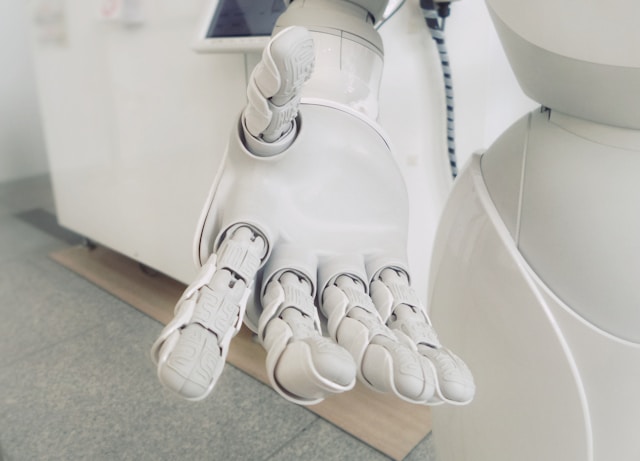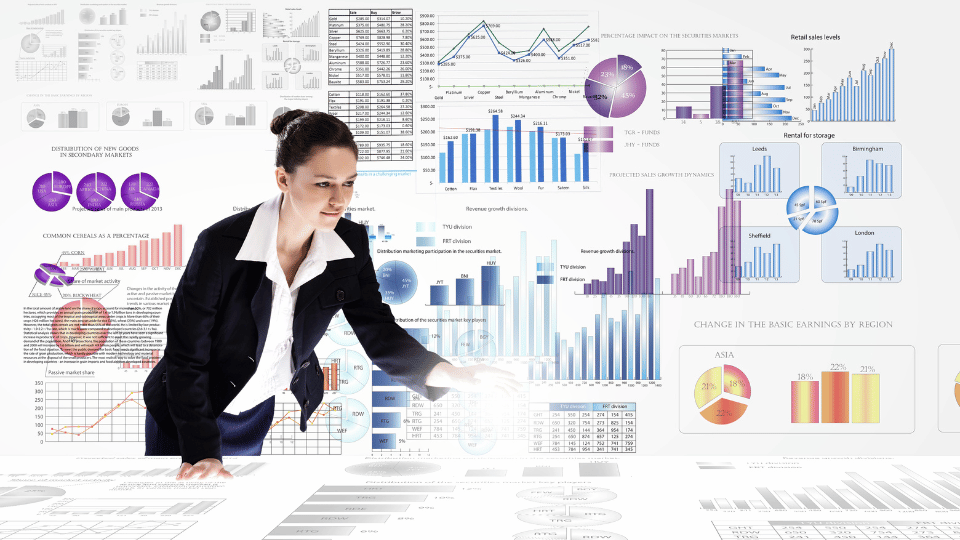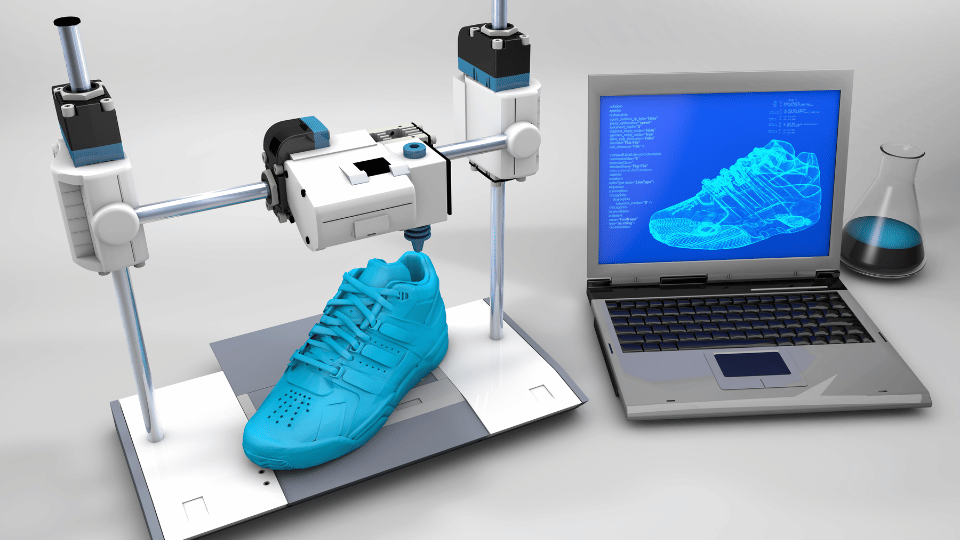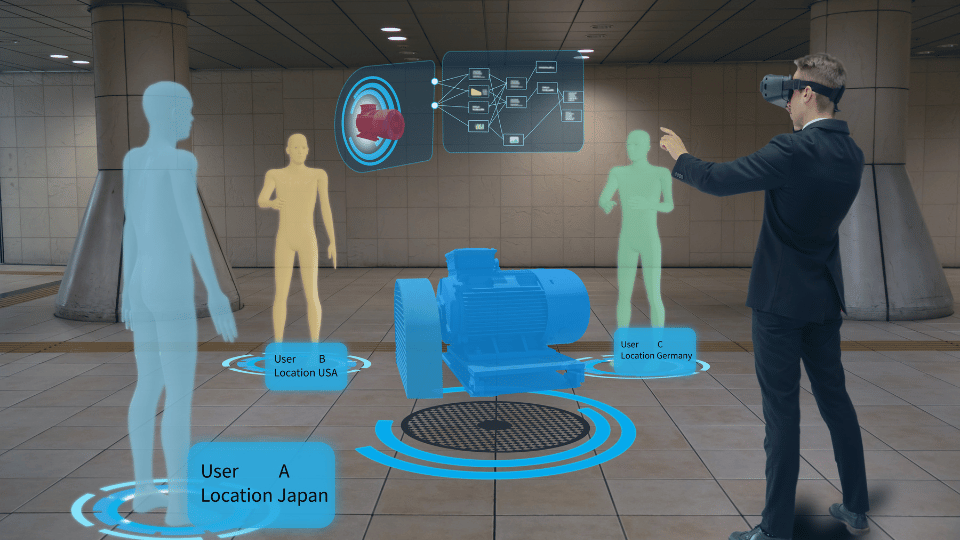The Fourth Industrial Revolution, also known as IR 4.0, is transforming industries and economies worldwide. With advancements in technology such as artificial intelligence, robotics, and the Internet of Things, IR 4.0 is reshaping the way we live and work.
In this article, we will delve into the concept of IR 4.0 and its implications for industries, with a specific focus on the Malaysian perspective. We will explore the 8 significant building blocks that makes up Industrial Revolution 4.0, its benefits and drawbacks and strategies for successful implementation. Additionally, we will discuss the importance of developing the right skills to thrive in the era of IR 4.0.
As we embark on this journey to unveil the future of industry, it is crucial to understand the significance of IR 4.0 and how it is revolutionizing various sectors. Let us dive deeper into the world of IR 4.0 and discover the opportunities and challenges it presents.
Industry 4.0—also called the Fourth Industrial Revolution or 4IR—is the next phase in the digitization of the manufacturing sector. It is characterized by the fusion of digital technologies, artificial intelligence, automation, and the Internet of Things (IoT). IR 4.0 represents a significant shift in the way industries operate and interact with technology. It encompasses the use of advanced technologies such as robotics, big data analytics, cloud computing, and machine learning to create smart factories and enable seamless communication between machines, systems, and humans.

The main goal of IR 4.0 is to enhance productivity, efficiency, and flexibility in manufacturing processes. It enables real-time data collection and analysis, allowing companies to make data-driven decisions and optimize their operations. By leveraging automation and connectivity, IR 4.0 aims to create a highly efficient and agile manufacturing ecosystem.
One of the key features of IR 4.0 is the integration of cyber-physical systems, where physical machines and digital systems work together to monitor and control manufacturing processes. This integration enables the creation of intelligent systems that can autonomously make decisions and adapt to changing conditions.
IR 4.0 also brings about the concept of smart manufacturing, where machines and systems are interconnected and communicate with each other in real-time. This connectivity enables seamless coordination and collaboration between different components of the manufacturing process, leading to improved efficiency and reduced downtime.
IR 4.0 represents a paradigm shift in the manufacturing industry, where technology plays a central role in driving innovation, productivity, and competitiveness. It opens up new possibilities for businesses to transform their operations and create value in the digital age.
IR 4.0 is gaining significant attention in Malaysia. As a developing economy, Malaysia recognizes the potential challenges and opportunities that IR 4.0 brings. The country is actively working towards incorporating the elements of the Fourth Industrial Revolution into its economic ecosystem. The Malaysian government has acknowledged the importance of IR 4.0 and has taken steps to embrace this technological revolution. The National Policy on Industry 4.0 was introduced to guide the implementation of IR 4.0 in Malaysia. This policy aims to transform Malaysia into a high-value economic ecosystem by leveraging advanced technologies and innovation.
Universities and higher learning institutions in Malaysia are also actively involved in preparing the workforce for IR 4.0. They are offering courses and programs that focus on the skills required for the Fourth Industrial Revolution. This ensures that the Malaysian workforce is equipped with the necessary knowledge and expertise to thrive in the era of IR 4.0.
However, there are challenges that Malaysia faces in adopting IR 4.0. One of the challenges is the need for a comprehensive understanding of the technologies and processes involved in IR 4.0. This requires investments in research and development, as well as collaboration between industry and academia.
Another challenge is the availability of skilled talent. Malaysia needs to develop a pool of skilled professionals who can drive the implementation of IR 4.0. This requires a focus on education and training programs that equip individuals with the relevant skills in areas such as data analytics, artificial intelligence, and automation.
Despite these challenges, the Malaysian perspective on IR 4.0 is optimistic. The country sees IR 4.0 as an opportunity to enhance productivity, improve competitiveness, and drive economic growth. By embracing the Fourth Industrial Revolution, Malaysia aims to position itself as a leader in advanced manufacturing and technology-driven industries.
The Fourth Industrial Revolution, also known as IR 4.0, is a term used to describe the current technological advancements that are transforming industries and societies. IR 4.0 is characterized by the fusion of digital technologies, artificial intelligence, automation, and the Internet of Things (IoT). It represents a new era of connectivity and data-driven decision-making. At its core, IR 4.0 aims to create a seamless integration of physical and digital systems, enabling machines and devices to communicate and cooperate with each other.
This integration is made possible through the use of technologies such as big data analytics, cloud computing, and cyber-physical systems. IR 4.0 is not just about the adoption of new technologies, but also about the transformation of business models and processes. It requires organizations to rethink their strategies and embrace innovation.
One of the key aspects of IR 4.0 is the concept of smart factories, where machines and systems are interconnected and can make autonomous decisions based on real-time data. These smart factories leverage technologies such as robotics, 3D printing, and advanced analytics to optimize production processes and improve efficiency.
Industry Revolution 4.0 is built upon several key technological components that enable the transformation of traditional industries into smart and connected systems.
One of the building blocks of IR 4.0 is the Internet of Things (IoT), which refers to the network of physical devices, vehicles, appliances, and other objects embedded with sensors, software, and connectivity to exchange data and enable remote monitoring and control.

Another crucial component is big data analytics, which involves the collection, processing, and analysis of large volumes of data to uncover patterns, trends, and insights that can drive informed decision-making and optimize processes.
Artificial Intelligence (AI) is also a fundamental building block of IR 4.0. AI technologies, such as machine learning and deep learning, enable machines to learn from data, make predictions, and perform tasks that typically require human intelligence.
Additive manufacturing, commonly known as 3D printing, is another key element of IR 4.0. This technology allows for the production of complex and customized objects by adding material layer by layer, revolutionizing traditional manufacturing processes.

Cybersecurity is an essential building block of IR 4.0, as the increased connectivity and data exchange in smart systems also pose new security risks. Robust cybersecurity measures are necessary to protect sensitive data and ensure the integrity and reliability of connected systems.
Robotics and automation play a significant role in IR 4.0, enabling the deployment of autonomous robots and machines that can perform tasks with precision, efficiency, and consistency. These technologies enhance productivity and reduce the reliance on human labor.
Cloud computing is another building block that supports the implementation of IR 4.0. Cloud-based platforms provide scalable and flexible infrastructure for storing, processing, and accessing data, as well as hosting applications and services.
Finally, digital twin technology is a crucial component of IR 4.0. A digital twin is a virtual replica of a physical object, process, or system that enables real-time monitoring, simulation, and analysis. It allows for predictive maintenance, optimization, and innovation in various industries.

These building blocks of IR 4.0 work together to create a connected and intelligent ecosystem that drives innovation, efficiency, and productivity in industries across the globe.
Implementing IR 4.0 requires a well-defined strategy that takes into account various factors. Here are some strategies that can help organizations successfully implement IR 4.0:
1. Assess Current State: Before embarking on the IR 4.0 journey, organizations need to assess their current state of technology, processes, and workforce capabilities. This assessment will help identify gaps and areas that need improvement.
2. Set Clear Objectives: It is important to set clear objectives for the IR 4.0 implementation. These objectives should align with the organization’s overall goals and vision. Clear objectives provide a roadmap for the implementation process.
3. Develop a Roadmap: Once the objectives are set, organizations should develop a roadmap that outlines the steps and milestones for the IR 4.0 implementation. This roadmap should include timelines, resource allocation, and key performance indicators.
4. Invest in Training and Development: IR 4.0 requires a digitally savvy workforce. Organizations should invest in training and development programs to upskill their employees and equip them with the necessary knowledge and skills to embrace new technologies.
5. Foster Collaboration: Collaboration is key to successful IR 4.0 implementation. Organizations should foster collaboration between different departments, teams, and even external partners. This collaboration will help in sharing knowledge, best practices, and resources.
6. Ensure Data Security: With the increased use of digital technologies, data security becomes crucial. Organizations should implement robust data security measures to protect sensitive information and prevent cyber threats.
7. Monitor and Evaluate: Continuous monitoring and evaluation are essential for successful IR 4.0 implementation. Organizations should regularly monitor the progress of the implementation, evaluate the outcomes, and make necessary adjustments to ensure optimal results.
8. Embrace a Culture of Innovation: IR 4.0 is all about innovation and embracing new technologies. Organizations should foster a culture of innovation where employees are encouraged to explore new ideas, experiment with new technologies, and take calculated risks.
By following these strategies, organizations can increase their chances of successful IR 4.0 implementation and reap the benefits of the Fourth Industrial Revolution.
Industry 4.0 brings significant advantages to organizations, including real-time data analysis, increased visibility, autonomous monitoring, enhanced productivity, and improved quality control. With the integration of advanced technologies such as artificial intelligence, machine learning, and the Internet of Things (IoT), businesses can optimize their operations and make data-driven decisions.
Improved productivity and efficiency are key benefits of IR 4.0. Automation and digitization of processes lead to streamlined operations, reduced manual errors, and increased output. This allows companies to produce more with fewer resources, ultimately improving their bottom line.
Another advantage of IR 4.0 is improved analytics and decision-making. With access to real-time data and advanced analytics tools, organizations can gain valuable insights into their operations, customer behavior, and market trends. This enables them to make informed decisions, identify areas for improvement, and stay ahead of the competition.
Optimizing product and service offerings is also a benefit of IR 4.0. By leveraging data analytics and customer insights, businesses can tailor their products and services to meet specific customer needs and preferences. This personalization not only enhances customer satisfaction but also increases the chances of repeat business and customer loyalty.

However, along with its benefits, IR 4.0 also presents some drawbacks. One of the main challenges is the potential job displacement. As automation and AI technologies take over repetitive and manual tasks, there is a risk of job loss for workers in certain industries. This calls for the need to reskill and upskill the workforce to adapt quickly to the changing job landscape.
Another drawback is the lack of global standards and protocols in IR 4.0. This can result in interoperability issues between different systems and technologies, making it difficult for organizations to integrate and scale their operations. The absence of standardized frameworks also poses security risks, as cyber threats become more sophisticated.
To thrive in the Fourth Industrial Revolution, companies must ensure that their workers are properly equipped through upskilling and reskilling programs. The skills required for IR 4.0 are different from those needed in previous industrial revolutions. Technical skills such as programming, data analysis, and experience with emerging technologies like artificial intelligence and robotics are in high demand. In addition to technical skills, soft skills such as critical thinking, problem-solving, creativity, and adaptability are also crucial for success in IR 4.0.
To develop the right skills for IR 4.0, organizations can implement various strategies. They can provide training programs and workshops to enhance technical competencies and promote a culture of continuous learning. Collaboration with educational institutions and industry partners is also essential. By working together, companies can ensure that the curriculum and training programs align with the skills required for IR 4.0.
Furthermore, companies can encourage employees to participate in professional development opportunities, such as attending conferences and obtaining certifications in relevant fields. Upskilling and reskilling programs should be tailored to the specific needs of each organization and its workforce. This can be achieved through skills assessments and gap analyses to identify areas that require improvement.
It is important for organizations to create a supportive and inclusive learning environment where employees feel empowered to acquire new skills and embrace change. By investing in the development of the right skills for IR 4.0, companies can ensure that their workforce remains competitive and adaptable in the rapidly evolving digital landscape.